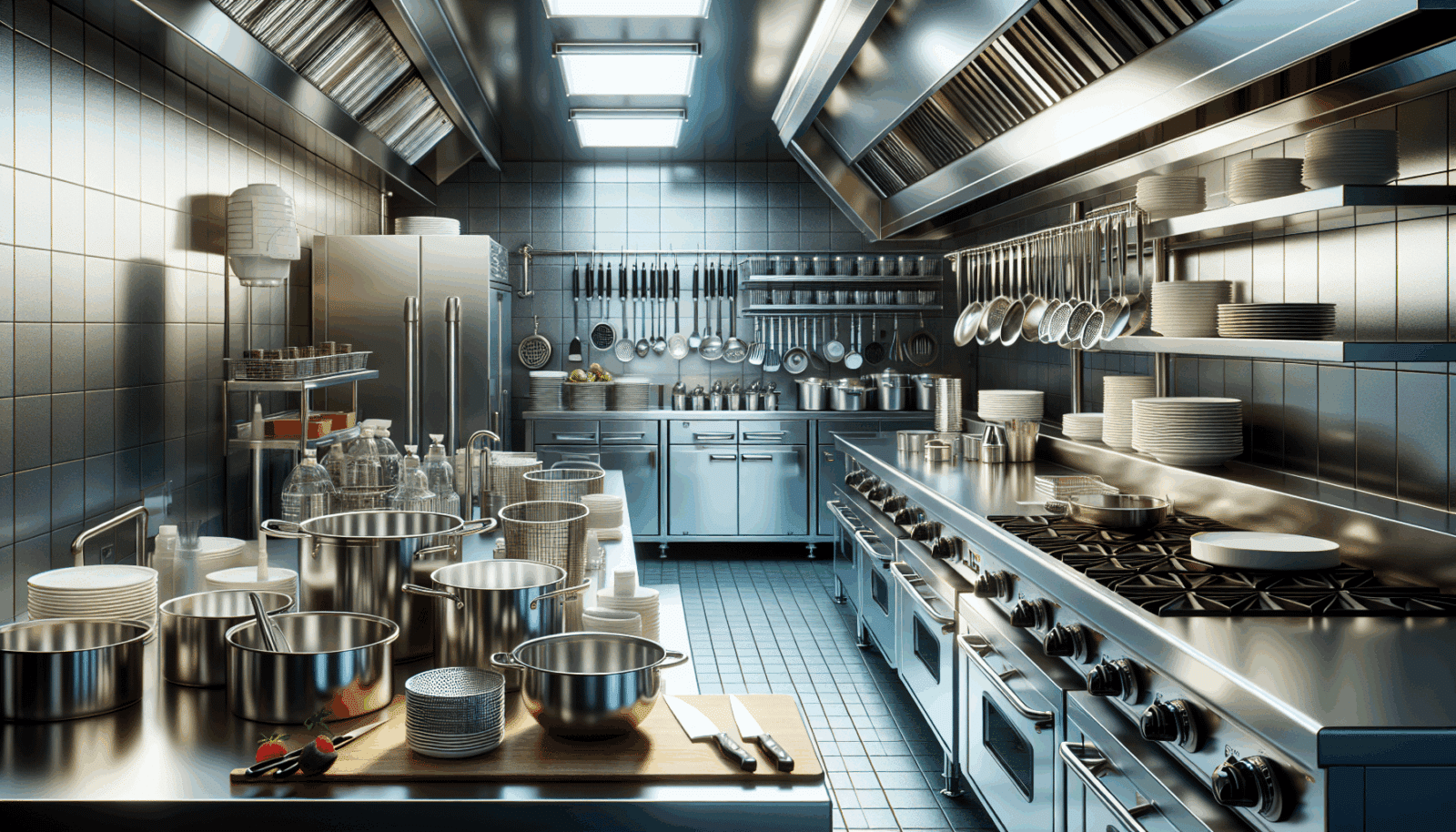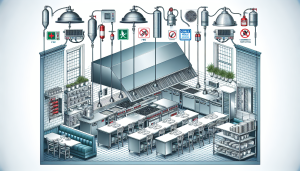When it comes to maintaining a clean and safe Commercial kitchen, understanding the importance of Grease trap cleaning cannot be overstated. Luckily, at Utah Hood Cleaning, we specialize in ensuring your kitchen remains a pristine environment for cooking and serving. From Salt Lake to Davis and Utah County, we’ve seen firsthand the consequences of neglected grease traps. This ultimate guide is designed to shed light on the importance of regular maintenance, offering you practical advice and solutions to keep your kitchen running smoothly.
Why Grease Trap Cleaning is Essential
It’s no secret that grease traps play a crucial role in a kitchen’s wastewater disposal system. They are the unsung heroes, preventing fats, oils, and grease from entering the sewer system. However, without regular maintenance, a clogged grease trap can become a kitchen’s worst nightmare, leading to unpleasant odors, slow drainage, and even costly backups. That’s where we come in. Our expert team at Utah Hood Cleaning is dedicated to preventing these headaches, ensuring your kitchen remains a clean and efficient workspace.
Moreover, environmental compliance is another significant aspect of grease trap cleaning. Failure to maintain your grease trap properly can result in fines and penalties from local health departments. It’s not just about keeping your kitchen clean; it’s also about adhering to health regulations and contributing to the overall wellbeing of the community by preventing sewer overflows and contamination.
The Signs of a Full Grease Trap
Identifying when it’s time for a grease trap cleaning doesn’t have to be a guessing game. There are several tell-tale signs that your grease trap needs attention. First, if you begin to notice foul odors emanating from your kitchen drains or grease trap area, it’s time to call us. These odors are a clear indicator that your grease trap is reaching capacity and can no longer effectively trap and contain the grease.
Another sign to look out for is slow drainage. When water starts pooling around your sinks or floor drains, it signifies a blockage downstream, often within a full grease trap. Acting quickly when you notice these signs can prevent the situation from escalating, avoiding potential health hazards and ensuring your kitchen remains operational.
Regular Maintenance Schedule
One of the most proactive steps you can take towards maintaining a clean and safe kitchen is establishing a regular maintenance schedule for your grease trap. Depending on the size of your kitchen and the volume of cooking, this might mean monthly, quarterly, or even more frequent cleanings. Our team at Utah Hood Cleaning can help you determine the optimal cleaning frequency to keep your grease trap functioning properly without any hassle.
Sticking to a regular maintenance schedule not only prevents emergency issues but also extends the life of your grease trap. Consistent cleanings remove buildup that can corrode and damage your trap over time, ensuring it continues to operate efficiently for years to come.
DIY vs. Professional Grease Trap Cleaning
While some minor cleaning tasks can be handled in-house, grease trap cleaning is best left to the professionals. This is not only due to the complex nature of the task but also the local regulations that dictate the proper disposal of the waste collected. At Utah Hood Cleaning, our team is equipped with the necessary tools and knowledge to clean your grease trap thoroughly, ensuring it meets all health and safety standards.
Attempting to clean a grease trap without the proper expertise can lead to incomplete removal of fats, oils, and grease, effectively defeating the purpose of the cleaning. Furthermore, improper handling of grease trap waste can result in environmental hazards and legal consequences. Trusting professionals like us ensures the job is done correctly and responsibly.
The Cleaning Process Explained
The grease trap cleaning process involves several key steps to ensure thorough removal of grease build-up and blockages. Initially, our team will inspect the trap to assess its condition and identify any immediate issues. Following the inspection, we’ll begin the cleaning process by removing the trap’s cover and pumping out the accumulated grease, oils, and fats.
Once the majority of the waste is removed, we then proceed to scrape down the sides, lid, and baffles of the trap to remove any residuals. The trap is then flushed out with a specialized solution to cleanse any remaining grease and ensure the trap is entirely free of blockages. This meticulous approach ensures your kitchen’s grease trap operates effectively, preventing backups and maintaining a clean and safe environment.
The Benefits of a Clean Grease Trap
A clean grease trap contributes significantly to the overall efficiency and hygiene of your commercial kitchen. Firstly, it ensures seamless wastewater disposal, preventing backups and potential flooding, which can be both costly and hazardous. Secondly, a well-maintained grease trap minimizes unpleasant odors, creating a more pleasant environment for both your staff and customers.
Furthermore, regular cleaning helps you stay compliant with local health regulations, avoiding fines and demonstrating your commitment to public health and safety. Overall, investing in routine grease trap cleanings is essential for any responsible kitchen operation, ensuring a smoother, more efficient, and compliant kitchen environment.
5 Essential Tips for Grease Trap Maintenance
- Monitor the grease trap regularly to identify when it’s nearing capacity and requires attention.
- Avoid pouring hot water or harsh chemicals down the drain, as this can melt trapped grease, allowing it to stick to your pipes further downstream.
- Implement kitchen practices that minimize the amount of grease disposed of through your sinks to reduce the buildup within your grease trap.
- Keep a maintenance log to track cleaning schedules and any issues encountered. This can help identify patterns and optimize your maintenance strategy.
- Partner with a professional cleaning service like Utah Hood Cleaning to ensure your grease trap is cleaned thoroughly and in compliance with local regulations.
Choosing the Right Service Provider
Selecting the right professional service for your grease trap cleaning is critical. You want a partner that understands the specific needs of your kitchen and can provide reliable, efficient service. At Utah Hood Cleaning, we pride ourselves on our expertise and commitment to customer satisfaction. Our team is fully licensed and equipped to handle grease trap cleanings of any size, ensuring your kitchen complies with all local health regulations.
Moreover, we offer flexible scheduling options to minimize disruptions to your operation, understanding that every kitchen’s needs are unique. With us, you can rest assured that your grease trap cleaning is in capable hands, allowing you to focus on what you do best – serving great food.
Wrapping Up
Maintaining a clean and functional grease trap is an essential aspect of running a successful commercial kitchen. By recognizing the signs of a full grease trap, adhering to a regular maintenance schedule, and partnering with professionals like Utah Hood Cleaning, you can ensure your kitchen operates smoothly and meets all health regulations. Remember, a clean grease trap not only benefits your operation but also contributes to the health and safety of your community.
Ready to Schedule Your Cleaning?
If your grease trap is overdue for a cleaning or you’re interested in establishing a regular maintenance schedule, don’t hesitate to reach out to us. Our team at Utah Hood Cleaning is ready to provide you with efficient and comprehensive grease trap cleaning Services. Contact Us today by phone at 801-853-8155 or Request a Free Quote to keep your kitchen safe, compliant, and odor-free.




